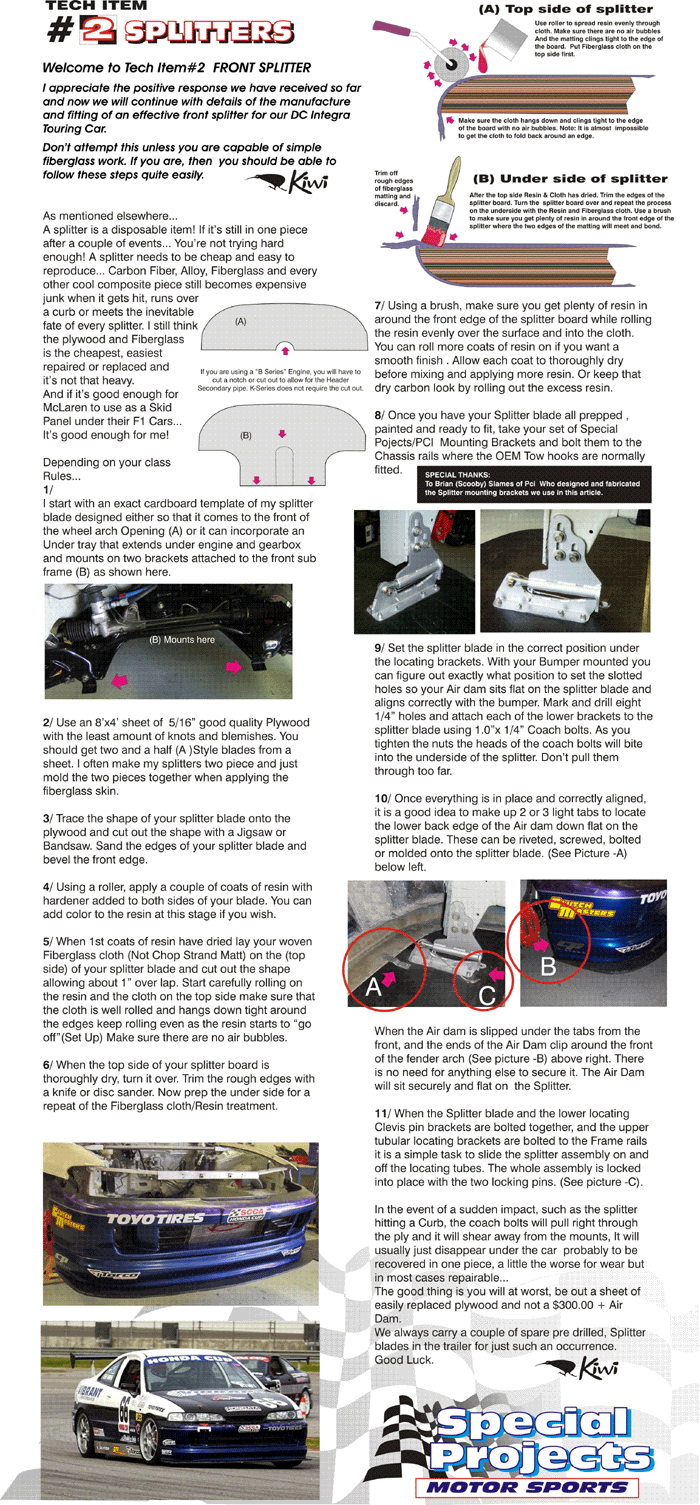I don’t believe there is any point in my being here living the American Dream, having over 30 years of international Motor Racing experience, a great Race Team, some of the coolest touring cars around, and a cool Race shop to play ln. If I don’t share the experiences of some of the things I have discovered, lessons learned – good & bad, Inventions and developments and just how some stuff works …
On this page I will periodically publish articles, drawings, concepts and interesting information that we have learned over the years. Information on everything from aerodynamics – Effective Splitters. Wings. Side Skirts and Under trays. Suspension development, trick Gear ratios for Honda’s, building on Electric Power Steering kit, to advise
on fitting and getting the best out of the products we develop and sell and many other items that attract my attention.
Some of you will disagree with me … That’s fine …
I love a good argument, it’s just knowing when to sit down and shut up that I have a problem with!
We welcome comments and constructive criticism as well.
I’m sure we’ll get plenty of that …
As a racer I have been dabbling with aerodynamics since about 1975 when I first started racing a fairly quick. but not too reliable 1298cc Mini Cooper S. Back then the "in thing" was Air Dams. Fender flaring And Brake ducts. So as a true Kiwi full of adventure and Innovation, with some not too shabby body repair skills. this is what I came up with … Did it work?
Damned if f know ..Looked cool though!
Fast forward to California Speedway
US Touring Cars 2000. I had decided tow and build-a full splitter/front under tray for our "97 JDM Type R Integra.
About 3 days before the event… NO need to rush things .. I cut out a sheet of 5/16" ply wood to the shape I required for the splitter coated it with a layer of Fiberglass cloth and resin. And with a..concoction of brackets and braces I managed to attach the splitter which extended right back under the engine to the front edge of the front Sub frame, where it attached to two brackets welded to the lower edge of the sub frame where the inner pick up points for the front tower control arms mount.
First lesson• Don’t experiment on Race Day!
At first. I found the new splitter created down force and front grip I had never experienced before! The car became an over steering pig. and quite frankly, I did not know
what to do with it! Eventually the front mounts weakened and bent to the point where the splitter began rubbing on the ground and lost its effectiveness. (See photo).
(Note: The front of the splitter has been forced down to the point where it is touching the track and down force is lost.)
Second Lesson
If you are going to increase down force you must also increase your spring rates to compensate.
Make sure your front spring rates allow the splitter to stay above the track surface by 1" when the suspension is compressed. When you stop the air flow under the splitter, you lose the down force effect.
Third Lesson• Ok it worked to a point… Now we have to refine it.
Moving on …
U.S.T.C.C. 2001 Las Vegas Speedway.
Almost a year’s worth of trial and error, new spring rates. better mounting system for the splitter, more effective Air Dam. Ducting and very effective Side Skirts. First time ever on a Speedway Oval.. Set Pole position in Qualifying . Finished 3rd on Saturday against Subaru AWD Turbo and BMW. Won on Sunday after spinning on the first lap and fighting
back through the field.
I have been experimenting with all kinds of composite materials and regardless of what anyone says. or thinks is the best… I have found the following to be correct …
A splitter is a disposable item! If it’s still in one piece after a couple of events … You’re not trying hard enough! A splitter needs to be cheap and easy to reproduce… Carbon Fiber, Alloy, Fiberglass and every other cool composite piece still becomes expensive junk when it gets hit, runs over a curb or meets the inevitable fate of every splitter. I still think the plywood and Fiberglass is the cheapest. easiest repaired or replaced and it is not that heavy. We have now come to the point where we think we have our Integra’s working as good, or better than anything in our class.
(Note: The air gap between the splitter and the track, even during high speed cornering, thus down force is maintained.)
The final step is the fitting of our complete Air dam, Under tray, Side
Skirts and Rear Diffuser. Detailed here …
TESTNG: Willow Springs. Even with our Prototype set up, the car was
very stable at high speed, we picked up 400 rpm in the top end. And our data Indicated we were generating down force we have never enjoyed before. More testing to come …
In the latter part of the 2006 season we were still running the 2.0 Liter B Series Engine. We built a custom radiator with dueling going In the front of the JDM Bumper/ Grill opening, then exiting up through the Hood (See drawing A)
Drawing (A) will certainly work well with the 7 to 9 degree diffuser angle. There should be no need to cut up into the bumper cover. The problem with a diffuser roof angle of 9 degrees or more, Is In the difficulty In getting the flow to stay attached to the ceiling even using vortex generators. If the flow detaches, the whole mechanism for keeping the flow moving as quickly as possible is broken and the down force is severely affected. Thus, the 9 degree roof angle will work very well for keeping things tidy under the car.

